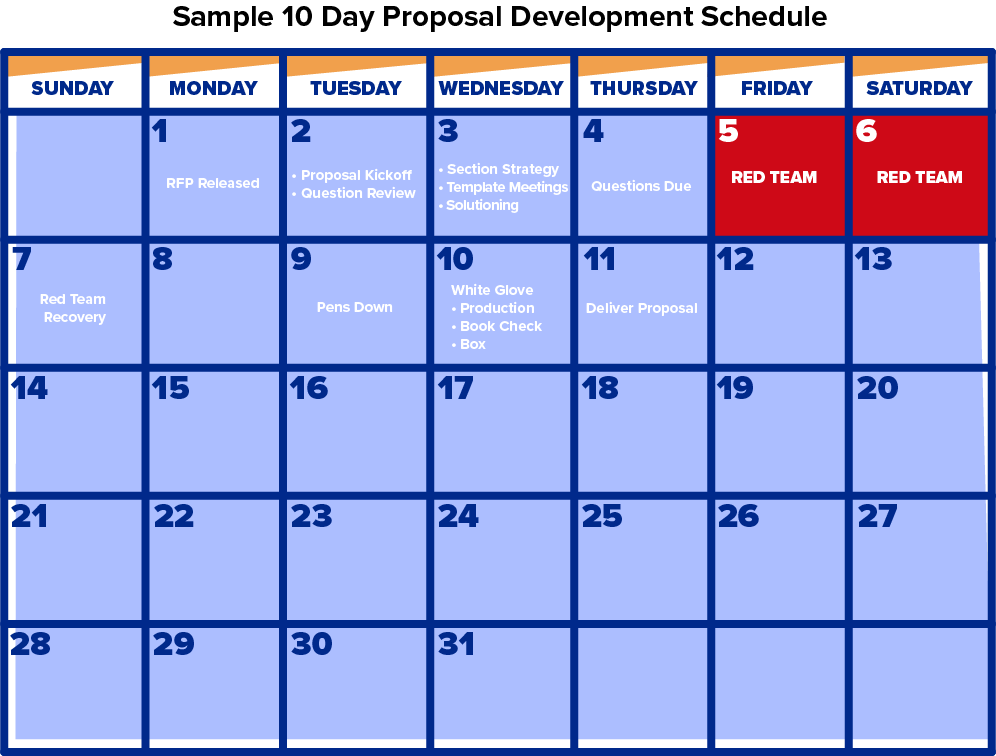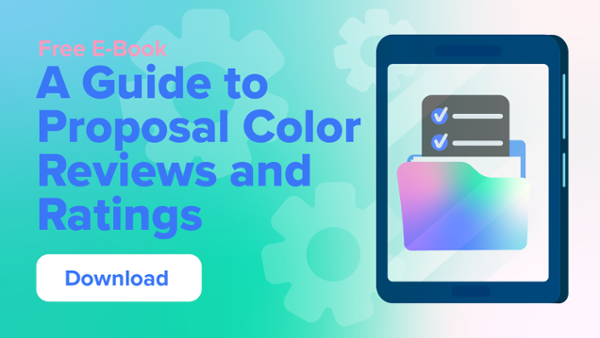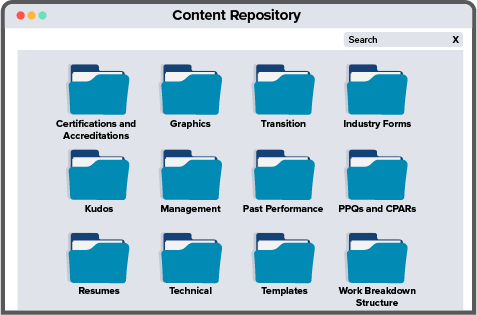
If I were to give advice to a writer working on a proposal, I would say: plan before you write, write to your plan, and think big picture from the start.
In a perfect world, you would have more than enough time to prepare your proposal, unlimited talent and resources on the project, and an invaluable list of solutions and discriminators. But as any proposal writer will tell you, oftentimes the landscape is far from ideal. That being said, I would add one more piece of advice when working on a proposal - perhaps the most important piece - make sure you remain flexible.
Proposal writing is a collaborative effort and is usually conducted by several authors. In the face of limited internal resources, like appropriate staff, it is important to remain flexible and amendable when working toward developing a winning proposal.
In this article, we will break down how to approach a proposal with limited resources and position your team to win.
Ideal Proposal Scenario
In an ideal scenario, a typical Proposal Team tackling an average-sized proposal with three volumes (Past Performance, Management/Technical, and Cost) would include a Capture Manager, Proposal Manager, Proposal Coordinator, Integration and Compliance Manager, Volume Manager, Section Leads, Production Manager, Orals Slide Master, Orals Coach (if Orals are required), Writers, and Review Team Members.
In this ideal scenario, your team would have completed significant capture activities, vetted the solution with the customer, conducted pre-RFP proposal planning and development, and would have at least 60 days until submission after the final RFP release.
Common Proposal Scenario
Oftentimes you will find yourself in a proposal scenario where you have limited resources or extreme time constraints. Once you’ve understood the full scope of the endeavor before you, make sure to have a full understanding of the resources that you do have and establish clear roles and assignments early on.
Streamline the development process, schedule, and review cycle. When appropriate, reuse previously vetted materials, and make sure to prioritize your graphics early on.

Understand Resource Availability and Establish Roles
If you find yourself facing a proposal with a limited team, the first thing to understand is the full scope of the project before you and who is available, and then work to clearly define their roles. It would serve you well to identify all available resources and the level to which they are available. On a small team, it is oftentimes required for members to wear multiple hats or to combine positions.
Some position combination examples are: Capture Manager/Proposal Manager, Proposal Manager/Integration and Compliance Manager, Coordinator/Production Manager, and Volume Manager/Section Lead. If your budget allows, consider bringing in outside help. Dedicated consultants can slot into the Proposal Team to support content development, help spread out the workload and can provide an invaluable stopgap.
Streamline the Development Process and Schedule
Once you have a team in place with clearly defined duties, work to streamline the development process and schedule. Start by creating a schedule that analyzes the time available against your team’s schedule. If you are under extreme time constraints, create the schedule by working backward from the due date. A sample 10-day schedule and sample 30-day schedule are below.


With limited resources, communication is certainly one of the keys to success. Therefore, when planning, make sure to incorporate regular check-ins with writers for status updates into the schedule.
It would be helpful to incorporate a collaboration software tool and introduce it and the filing system to the team as well. Collaboration tools like SharePoint on Microsoft Office 365 provide a meaningful enhancement in developing compliant, compelling, and complete proposals. For example, one useful feature allows multiple writers and/or reviewers to work in a proposal document at the same time. This built in ability diminishes repetitive comments and the need to merge comments from multiple documents, allows writers and reviewers to elaborate comments and edits, and accelerates the color review recovery overall process.
Streamline the Review Process
With your team in place and the writing underway, multiple reviews may prove challenging because you don’t have enough reviewers on deck. Therefore, you may have the same reviewers work on the document from beginning to end. In that case, do not fret, you have review options!
If you don’t have the luxury of outside reviewers, consider having authors cross-review other sections. This has the added benefit of ensuring their sections are consistent. In some cases, it may make sense to blend your reviews and create a blue/pink or a pink/red that allows the team to accomplish the purposes of the reviews but saves time and requires fewer reviewers.
Another option would be a staggered review of the proposal as sections are completed, which cuts down on wait time for all sections to achieve the same level of maturity. Similar to a staggered review, a rolling review allows smaller teams to eliminate the stop-and-go of document development and lets reviewers look at the document in pieces.
A collaboration tool is extremely helpful in these scenarios. It allows reviewers to provide comments as authors are still updating the document and enables more expertise to be brought into the process by allowing for an increased number of reviewers in the same timeframe.
Using the collaboration feature available with Microsoft Office 365 and SharePoint streamlines the color team recovery process, reduces redundant and conflicting comments, saves recovery time, and shortens turnaround time.

Take Advantage of Reuse Materials
To simplify the process and decrease the load on a limited number of writers, Proposal Teams should take full advantage of their content repository and reuse materials like boilerplate content or past proposal submissions. These materials will aid writers in developing sections quickly with content that has been vetted and pre-approved.
Take time to establish a template with styles embedded such as font, size, spacing, etc., and train authors on how to use the template to cut down on desktop publishing (DTP) efforts and workload.

Don’t Leave Graphics to the Last Minute
Don’t forget your visuals! Graphic artists are often the unsung heroes of a proposal. Graphics have the power to strengthen your work by visually displaying strengths, benefits, and processes.
Make sure to prioritize them early on when working on a small team where you may not have access to a graphic artist through the entire process. Make sure to submit graphics requests as early as possible to allow time for creation and tweaks, if necessary. If teams are consistently restricted, you might consider having a repository of common graphics that are easy to tailor/update for each opportunity.
Conclusion
Remember, when you find yourself on a proposal team that does not have the ideal composition, you have multiple avenues to success as long as you plan and remain flexible. Make sure to understand the resources you do have and designate clear roles.
Make strategic decisions appropriate for your team to simplify the development process, schedule, and review cycle. Take full advantage of your content repository and prioritize your visual aids. Keep in mind that your proposal should aim to make the evaluator’s job as easy as possible despite existing resource limitations.
Need help on a tight turnaround proposal? We make it easy to book compliance, review, editing, and DTP support using our On-Demand Proposal Services.








